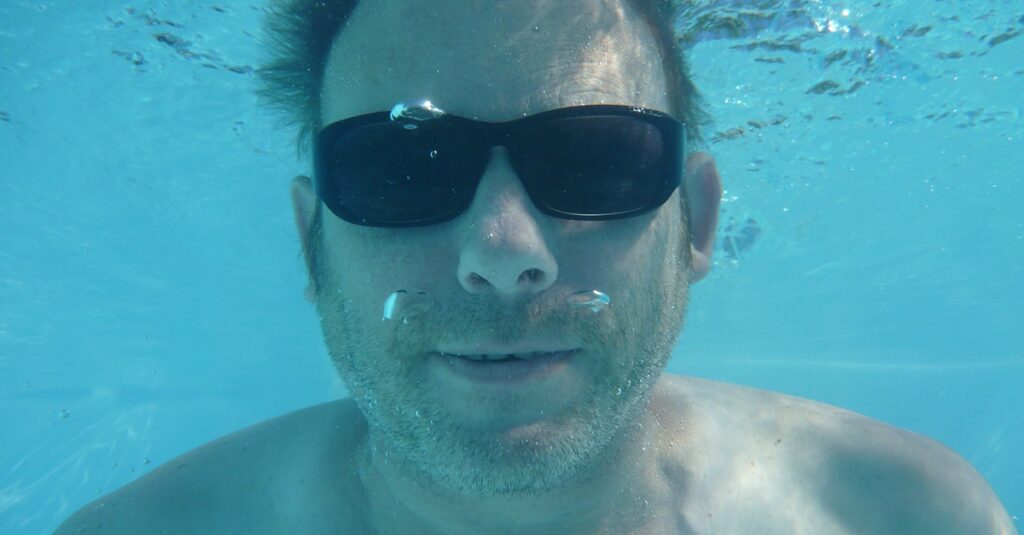

Freedivers at all levels should undertake regular apnea training in order to stay safe below the water, maintain lung and wider health, and boost their depth and dive time performance. Dry static apnea is a good exercise and relatively easy to fit into everyday life but it is not a substitute for practicing apnea in the water under pressure, or while moving.
Apnea is the technical term describing breath-holding. In freediving and other water sports apnea refers to voluntary breath-holding underwater. Apnea training and practice is essential for safe and competent freediving and there are a range of techniques and exercises which can help to boost lung capacity, enhance mental resilience and enable freedivers to dive safely for longer periods.
The True Story Book of Freediving Champion Audrey Mestre and the Story of Her Death
View on Amazon: The Last Attempt (Opens new tab)


Top rated read
With correct training and practice, freediving may actually increase lung function and capacity. At the same time, freedivers must manage the risks posed by increased hydrostatic pressure, hypoxia (low blood oxygen levels) and hypercapnia (high blood carbon dioxide levels).
Why do apnea training for freediving?
Whether you’re freediving recreationally or competitively, breath-holding is key to being able to dive deeper, for longer, in safety.
Learning breath-holding technique and regularly practicing apnea exercises on land can get you accustomed to the low levels of oxygen and low blood pH / high levels of carbon dioxide that you will experience while freediving. This can improve your mental and physical diving experience.
Practicing apnea in the water can increase your lung capacity and as you become more experienced you should be able to take in more oxygen before a dive and stay under the surface for longer.
Dynamic apnea exercises, which include walking or other movement while breath-holding, boost tolerance of lactic acid in the muscles as well as building up muscle strength for underwater movement during apnea.
Without apnea training, beginner freedivers will only be able to accomplish shorter, shallower dives. Incorrect breathing can also lead to serious injury, especially during deeper or repeated dives.
How to do dry static apnea training – Apnea exercises
Static apnea exercises are both a physical and mental challenge, requiring you to resist the automatic urge to breathe for as long as you can. When these exercises are practiced on land, the training discipline is referred to as dry static apnea. This is often the first apnea exercise which beginners are taught:
First you should obtain carbon dioxide and oxygen breath-hold training tables for freediving. These are systematic guides which set out how long you should hold your breath and how long to rest between holds. You should choose a suitable starting point in the tables for your level of experience and apnea capability.
Before you begin, lay down on a safe surface (e.g. bed, yoga mat, couch) in case you become dizzy or black out. You should then do a normal freediving ‘breathe-up’, the breathing process used to prepare the body immediately before a dive. For around two minutes, breathe in a slow and relaxed way, making your exhalations twice as long as inhalations.
When your breathe-up is complete, do a complete exhale to empty your lungs and then take a full inhale, filling up your lungs from the bottom, using segmented breathing.
At this point, hold your breath, start your timer and follow the numbers in the tables.
To learn more about dry static apnea, check out our full article on dry static apnea training for freediving (opens new tab).
Pros of apnea training for freediving
A good program of apnea training, in the water as well as on land, can make you a better freediver. Among a group of elite athletes who undertook freediving breath training, lung capacity was reportedly increased by 10%. Increased lung function and capacity can make you more capable of longer dives and deeper dives.
Undertaking regular apnea exercises, wet or dry, allows the body to get used to functioning under apnea conditions. This helps your body become more efficient in use of oxygen and tolerant of high carbon dioxide levels. Apnea walking or strength training gets your body accustomed to anaerobic muscle working.
Training for apnea can also make you psychologically more comfortable with breath-holding, calming the mental sensation of struggle that beginners can feel while breath-holding underwater. Relaxing reduces the risks of panicking and increases freediving enjoyment.
Cons of apnea training for freediving
Apnea exercises can be challenging and uncomfortable at first but they are necessary if you wish to become a safe and competent freediver.
Certain apnea exercises carry a risk that you could black out during training (e.g. strength training while breath-holding) and should therefore only be done together with a buddy who can monitor your physical state and help keep you on your feet.
Dry static apnea exercises do not exactly replicate the experience of high pressure underwater apnea during a dive. To increase your ability to freedive more deeply or for longer periods, there is no substitute for practicing apnea in the water.
Dry static apnea is also more difficult than the same exercises underwater because you will not have the assistance of the Mammalian Dive Reflex (MDR) being activated. This leads to lower breath-hold times for dry compared to wet apnea training.
How often should I do apnea training
You might practice dry static apnea two to four times per week. Some sources advise that beginners train three times a week with a rest day between sessions.
References
https://www.cmas.org/apnoea/about-2012032621
https://www.deeperblue.com/the-science-behind-the-freediving-breath-hold/
